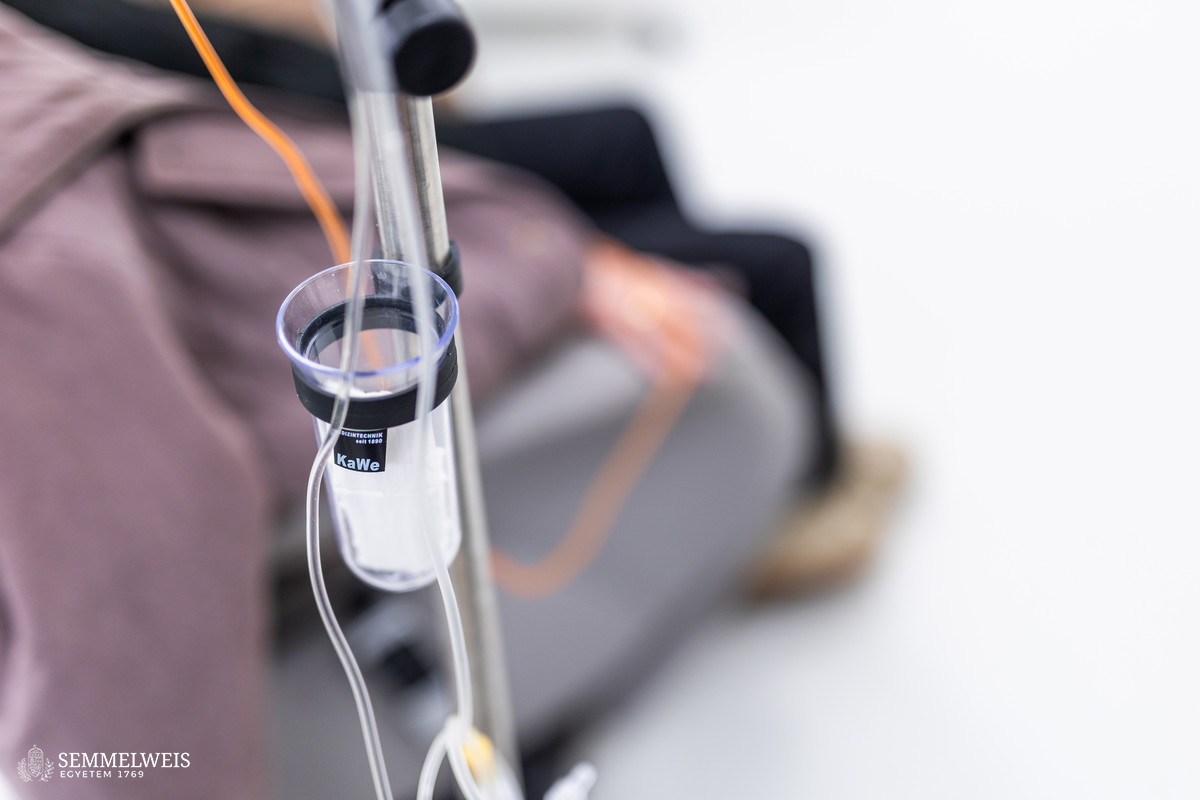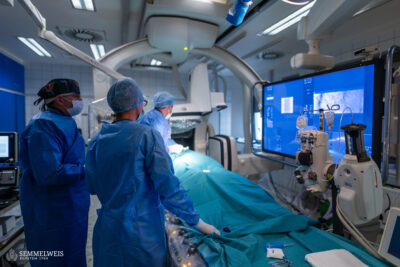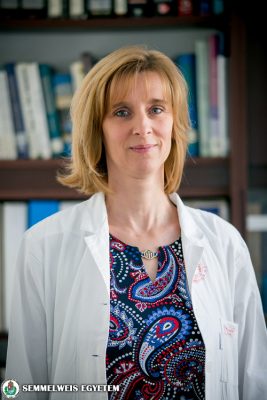 Lung cancer is one of the leading oncological diseases, with the highest mortality rate, with Hungary ranking among the worst in Europe due to its great incidence caused by the high number of smokers and its geographical location. Today, however, we need to look at this disease from a different perspective. New types of therapies, such as immunotherapy or targeted therapies, and personalized treatment of lung cancer can significantly improve survival even in inoperable, advanced, and metastatic cases, emphasized Dr. Veronika Müller, Director of the Department of Pulmonology. As a leading pulmonology center in the country, the Semmelweis University clinic diagnoses around 500 new lung cancer patients every year. All the latest therapies are available at the clinic and more than 2,500 oncotherapy treatments are administered each year, using state-of-the-art products in every possible case, she added.
Lung cancer is one of the leading oncological diseases, with the highest mortality rate, with Hungary ranking among the worst in Europe due to its great incidence caused by the high number of smokers and its geographical location. Today, however, we need to look at this disease from a different perspective. New types of therapies, such as immunotherapy or targeted therapies, and personalized treatment of lung cancer can significantly improve survival even in inoperable, advanced, and metastatic cases, emphasized Dr. Veronika Müller, Director of the Department of Pulmonology. As a leading pulmonology center in the country, the Semmelweis University clinic diagnoses around 500 new lung cancer patients every year. All the latest therapies are available at the clinic and more than 2,500 oncotherapy treatments are administered each year, using state-of-the-art products in every possible case, she added.
Two major groups of lung cancers can be distinguished: in 80 percent of the cases, these are so-called non-small cell cancers, including the most common adenocarcinoma, as well as squamous cell and large cell lung cancers. Small cell lung cancer is less common, accounting for 20 percent of cases, but has the worst prognosis.
If lung cancer is detected early enough, surgery is the first-line treatment for most patients with non-small cell lung cancer, but as this oncological disease develops latently with being asymptomatic for a long time, surgery remains a rare option. The new therapeutic options are mainly applicable to non-small cell lung cancer cases, but, for about a year now, immunotherapy combined with chemotherapy has been available in Hungary for the majority of patients with metastatic small cell lung cancer, shared Dr. Lilla Tamási, Deputy Director and Head of the Oncology Team.
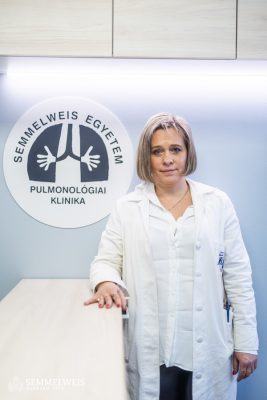 It is the type of tumor that determines which of the modern treatments available nationwide through social security a particular patient can receive. “Targeted therapy is chosen for advanced and metastatic non-small cell lung cancer, and in some surgical cases, when molecular pathology diagnostics confirm a mutation on the surface of the tumor for which we have specific medicine. Today, targeted therapies are available for about ten mutations, furthermore, the health insurance system finances the testing of 52 genes, i.e. all mutations for which clinical trials are being conducted anywhere in the world,” pointed out Dr. Lilla Tamási, emphasizing that gene sequencing is also performed at the university at the Department of Pathology and Experimental Cancer Research. Targeted therapy is only available for adenocarcinoma, the most common type of lung cancer that develops in glandular epithelial cells. For other types of cancer, immunotherapy may be one of the modern treatment options, with or without conventional chemotherapy.
It is the type of tumor that determines which of the modern treatments available nationwide through social security a particular patient can receive. “Targeted therapy is chosen for advanced and metastatic non-small cell lung cancer, and in some surgical cases, when molecular pathology diagnostics confirm a mutation on the surface of the tumor for which we have specific medicine. Today, targeted therapies are available for about ten mutations, furthermore, the health insurance system finances the testing of 52 genes, i.e. all mutations for which clinical trials are being conducted anywhere in the world,” pointed out Dr. Lilla Tamási, emphasizing that gene sequencing is also performed at the university at the Department of Pathology and Experimental Cancer Research. Targeted therapy is only available for adenocarcinoma, the most common type of lung cancer that develops in glandular epithelial cells. For other types of cancer, immunotherapy may be one of the modern treatment options, with or without conventional chemotherapy.
Lung cancer patients are mainly treated on a territorial care obligation basis. Inpatient pulmonology wards are available nationwide, where diagnoses are given, while modern immunotherapy and targeted treatments are available in every region. In Hungary, the first targeted therapy was introduced in 2012, and the first immunotherapy in 2017. Modern treatments are fully funded by the National Health Insurance Fund of Hungary (NEAK). In terms of survival of lung cancer patients treated, Hungary has now moved from being a laggard to the middle of the pack in Europe.
The breakthrough that the emergence and funded availability of new therapies represents is illustrated by the nationwide research conducted jointly by the Hungarian Respiratory Society (MTT) and MSD pharmaceutical company, in the scientific design and evaluation of which Semmelweis University played a leading role, together with other major pulmonary institutions in Hungary. The HELP 3 study examined the survival of patients with advanced and metastatic adenocarcinoma-type lung cancer. According to findings published at the end of 2023, access to modern targeted and immuno-oncology therapies has almost doubled survival rates: for patients who started treatment in 2019, three-year survival rates have improved significantly to 28.7 percent, compared to 14.5 percent for those diagnosed in 2011.
As Dr. Lilla Tamási pointed out:
This increased survival, however, can be achieved by treating lung cancer as a marathon rather than a sprint, since detailed molecular pathological diagnostics are time-consuming. Research has also shown that survival is worse where therapy is started hastily, without comprehensive data.
It is imperative that the tumor is carefully evaluated, and the therapy is determined by an oncology team, she added.
Most of these treatments are given to patients as part of a one-day course of medication. For the comfort of oncology patients, the Semmelweis University Department of Pulmonology also offers ten new automated chairs, which were delivered last year specifically for these treatments.
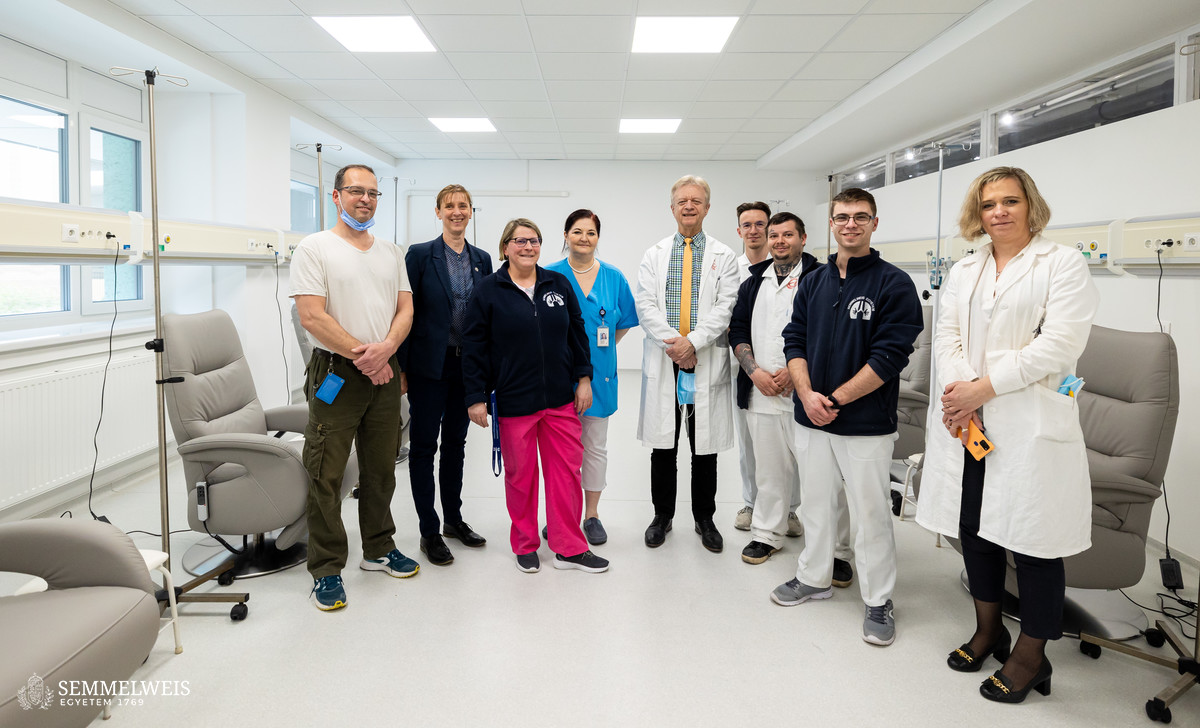
In addition to a wide array of therapeutic options, the university clinic also offers all diagnostic facilities. A key test for suspected lung cancer is bronchoscopy, which enables a biopsy, i.e. a sample to be taken. All the latest bronchoscopic procedures are now available at the clinic, including endobronchial ultrasound, which further improves the accuracy of confirming lymph node involvement. As an important aspect, the oncology team also includes a specialist in nuclear medicine and an invasive radiologist, significantly speeding up diagnostics, Dr. Veronika Müller emphasized.
A new laboratory for oncotherapy drugs to be built at Semmelweis University
The oncotherapy medicine given by infusion will be prepared by the Semmelweis University pharmacy to meet the specific needs of each patient, and within the shortest possible time after its prescription, underlined Dr. Szilvia Sebők, Chief Pharmacist. The production of these cytostatic mixed infusions is still partially centralized. However, a laboratory for the preparation of cytostatic mixture infusions using isolators is being set up, meeting the latest recommendations, and guaranteeing a high level of safety during preparation. Once this is completed, the university pharmacy will be able to meet all the needs of the institution.
Pálma Dobozi
Translation: Judit Szabados-Dőtsch
Photo: Bálint Barta, Attila Kovács – Semmelweis University
